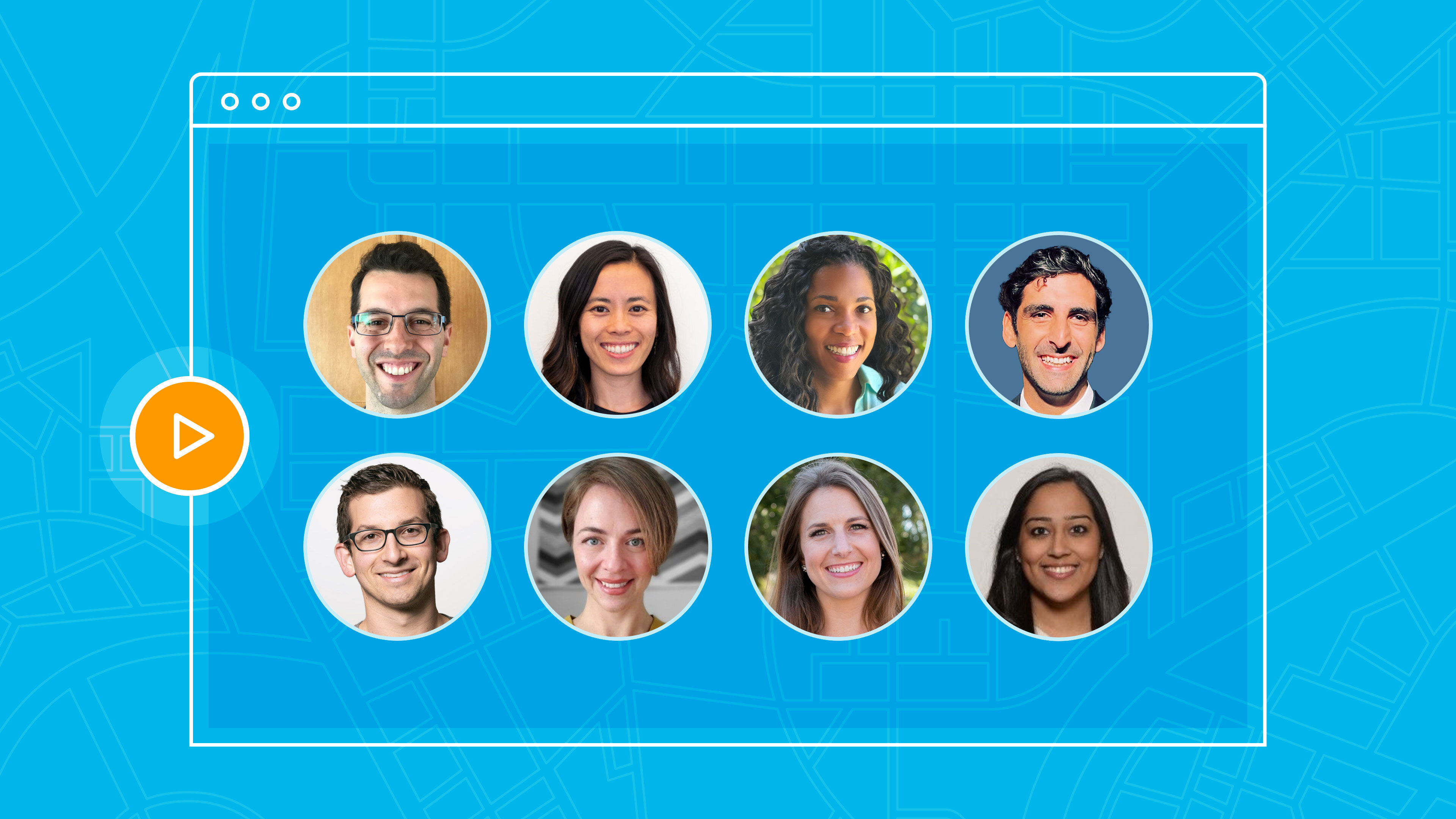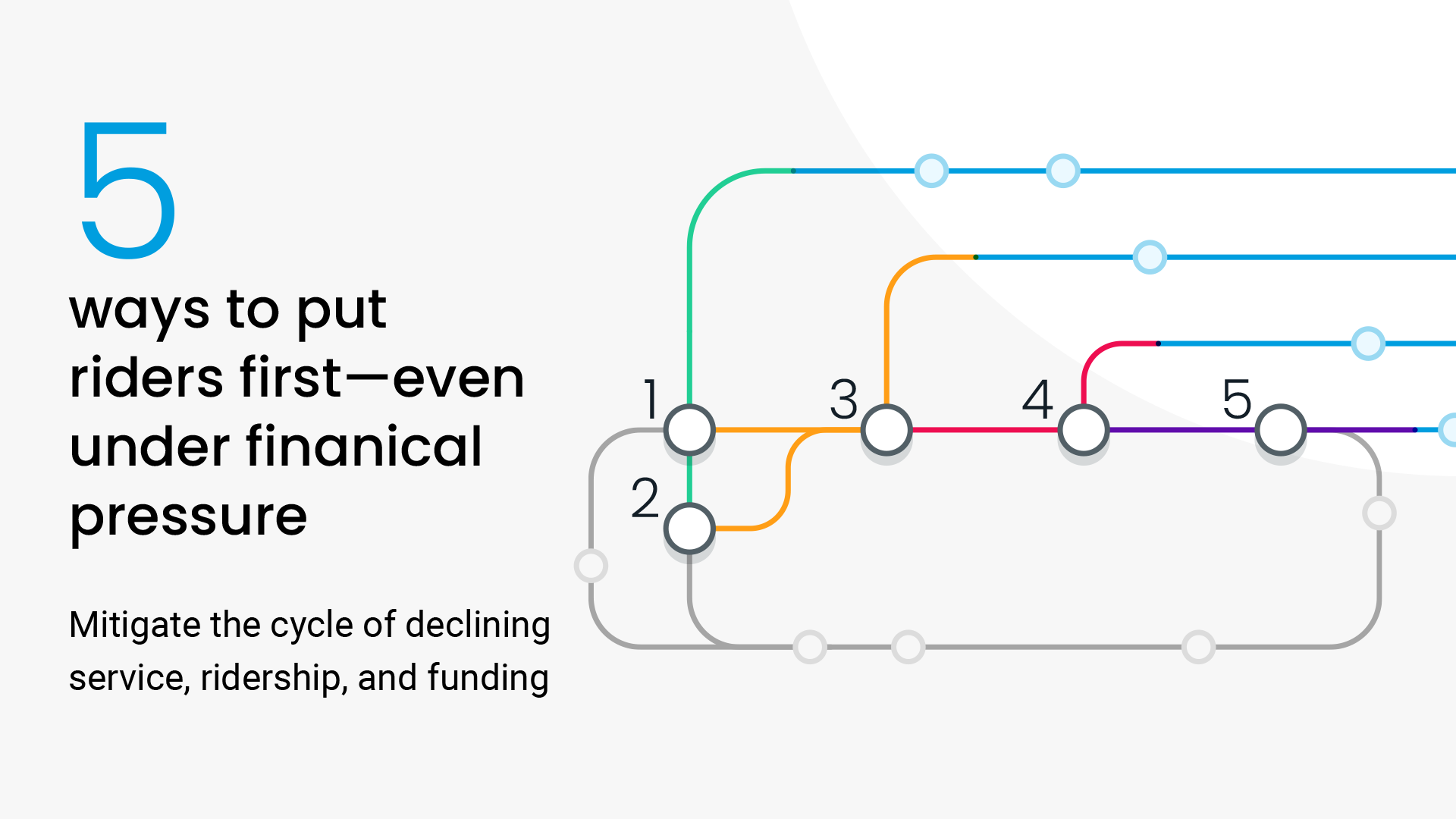
October 23, 2025
Delivering best-in-class passenger information

October 23, 2025
Delivering best-in-class passenger information
October 23, 2025
Delivering best-in-class passenger information
Swiftly was founded to answer every transit rider's question: “Where is my bus or train?” A decade later, we’ve expanded to offer the industry’s leading Transit Data Platform, but answering that original question remains a core priority.
Swiftly is proud to work with 190+ agencies that trust us to provide accurate, complete, and consistent rider information.
Read on to learn what’s required to deliver best-in-class RTPI.
Why passenger information continues to matter
Real-time passenger information (RTPI) is a fundamental tool for improving the rider experience, and its importance has only increased with recent trends.
- Rider expectations are high: They are accustomed to up-to-the-second information in ride-hailing apps and expect the same from transit.
- Budgets are tightening: Improving real-time information helps maintain rider confidence when complex service changes are unavoidable.
- Disruptions are routine: Construction, weather, and other planned and unplanned incidents occur daily and must be communicated clearly.
- Major events raise the stakes: From farmers’ markets and fireworks to championship parades and the FIFA World Cup, events attract new riders and affect daily commuters.
Agencies also have more control over improving rider information than service or infrastructure projects that may require long-term, costly investments. RTPI is a natural place to invest for immediate impact and strong return-on-investment (ROI) for the passenger experience.
Request a demo
Let's improve passenger information together
Answering, “Where is my bus or train?”
Rider expectations
Riders expect to know where their vehicle is at any moment and when it will reach them. An ETA should be a promise, not a guess. If the agency says the vehicle will arrive in five minutes, riders count on it. Late arrivals frustrate riders; early arrivals can cause missed trips and long waits. The former creates an annoyed customer, and the latter can lose customers by breaking their trust.
“We have really high-profile events coming up with the World Cup and the Olympics. We really want the customer experience to be a focus on the same level as operations,” said Nina Kin, Tech Lead on the Digital Experience Team at LA Metro, in a recent webinar on improving rider information during large events. “We're working on improving the confidence of riders with the information that we give them.”
Elements of accurate ETAs
High-frequency vehicle tracking
RTPI starts with tracking the location of vehicles with a high level of precision. Many legacy systems track buses using a single AVL source that refreshes every 30 seconds or more. That imprecise data results in unreliable information for riders.
Swiftly tracks vehicles using multiple GPS sources by leveraging other existing hardware devices (like wifi routers) on vehicles in addition to legacy CAD/AVL hardware. This results in higher frequency (once every second or better) and lower latency (one second or less) location tracking, giving agency staff and riders the experience of smooth, precise vehicle tracking.
In addition, multiple redundant AVL sources enable vehicle tracking even during equipment failures, CAD/AVL outages, or cyber attacks.
Powerful prediction algorithms
Swiftly’s data engine uses billions of historical data points to identify trends about how vehicles perform across time, place, and conditions. We then combine those trends with real-time information about vehicle movements and performance and apply sophisticated algorithmic models. The result is the industry’s most accurate ETAs, which are 20 to 50 percent better than other providers, in terms of increasing overall prediction accuracy and reducing very inaccurate ‘miss-the-ride’ predictions.
“We successfully improved our prediction accuracy by 22% and reduced miss-the-bus predictions by 94%. As a result, we've cut down on missed trip calls by over 10%. So we're seeing people being able to just access the bus more successfully.”
—Tyler Means, Chief Mobility and Strategy Officer, KCATA
Our ETAs also reflect historical and real-time trends. For example, Swiftly considers that buses are delayed on a given three-block stretch every weekday from 7:00 to 7:15 am due to school drop-off, and that the last three buses at an intersection were delayed due to a crash.
In addition, Swiftly Auto-Assigner correctly matches vehicles to scheduled trips, even if an operator does not log in or CAD/AVL hardware fails. This enables real-time information for previously untracked vehicles. For example, Valley Metro captured data for an additional 9% of stops due to Swiftly Auto-Assigner. The result for riders is more complete information by reducing ‘zombie’ buses or trips that show up without real-time ETA predictions.
Finally, Swiftly partnered with Transit to develop the industry’s first standard definition of prediction accuracy with the ETA Accuracy Benchmark, giving agencies an objective measuring stick to track the progress of their real-time information.
Swiftly consistently provides the industry’s most accurate real-time predictions:
- SEPTA improves prediction accuracy by 26% across 31 million annual trips
- CTtransit improves prediction accuracy by 24% across 18.5 million annual trips
- Pierce Transit improves prediction accuracy by 27% across 6 million annual trips
. . . Especially during disruptions
Disruptions are a fact of life for every transit agency and fall into a few common categories:
- Unplanned issues: Operator shortages cause trip cancellations, or a traffic accident causes detours.
- Planned changes: Long-term construction causes detours on multiple routes every night.
- Big events: A fireworks display or the FIFA World Cup cause new or modified service, as well as planned detours and unplanned incidents.
Answering, “Where’s my bus or train?” becomes even more critical during disruptions. Riders also want to know why the service changed, where to catch their ride instead, and how long the change will last.
Communicating disruptions with context
Swiftly Service Adjustments lets agency staff enter changes to service within seconds, from simple trip cancellations to complex multi-route recurring detours with temporary stops. Most agencies don’t consistently enter service adjustments because their existing tools make the process slow and cumbersome for dispatchers. Swiftly, by contrast, makes the process effortless. The result is that more adjustments are captured, and real-time information for riders reflects actual service. Swiftly also enables flexible workflows with the ability to ingest disruptions entered into another system, thereby avoiding double-entry.
“Our buses all have Swiftly real-time data, which works really well for our customers. But we were having a little trouble, like many transit agencies, with the issue of ghost buses and cancellations not making it out to riders in a timely fashion,” said Katie Monroe, Project Manager for Service Disruption Communications at SEPTA. “We went from a paper form being scanned and circulated to an internally created digital place for our dispatchers to enter the missed trips. Those cancellations pipe directly into the Swiftly data and go out to our own modern app and website, as well as all the various interfaces and apps that people might choose.”
But entering service adjustments is just the first step. The magic happens right after.
- Disruption-aware predictions: Swiftly is the only platform that generates truly disruption-aware predictions. Swiftly will not generate predictions for canceled trips or closed stops. The result is fewer ‘ghost’ buses (the ones that say they will show up, but don’t) for riders. During detours, Swiftly’s predictions also adjust to account for the additional distance the detour takes. The model then learns as more buses take the detour, resulting in increasingly accurate predictions.
- Real-time detour information: Swiftly was the first system to send detour information, including detour shapes and temporary stops, to third-party apps. Swiftly achieved this by co-developing (with Transit) Trip-Modifications, an update to the GTFS-realtime Trip Updates specification. Third-party apps can display this information in rider-facing maps in real time, giving riders information about where to catch a detoured bus.
- Swiftly Rider Alerts: Rider Alerts let staff publish clear, contextual updates from any Service Adjustment in one click. Pre-approved language and the adjustment’s details flow automatically into the alert, eliminating duplicate entry and speeding workflows. Riders are instantly notified of service changes in helpful, non-jargon language.
“Previously, we had to write out detour directions manually, list closed stops, and distribute updates—a time-consuming process,” said Sean Paio, VP of Transportation at Honolulu’s TheBus. “Today, our Operations staff can draw detours, and Swiftly automatically updates real-time predictions, displays detour paths in the Transit app, and sends out templated rider alerts using pre-approved language. This streamlined process allows our Operations team to work more efficiently, spend less time on data entry, and communicate detours to passengers faster and more accurately.”
A single source of truth for riders and staff
It’s not enough to make real-time information accurate and complete. RTPI must also be easily accessible to riders and staff.
Swiftly produces real-time data in the industry-standard GTFS-realtime format, in addition to JSON and XML APIs. This enables agencies to share data in the third-party apps most commonly used by riders (like Transit, Google Maps, Apple Maps), as well as through agency-owned electronic signs, websites, SMS & Voice services, and other channels.
Swiftly’s standards-based approach also ensures agency staff see the same data as riders. Customer service staff can answer the “Where is my bus?” question in seconds, even during unplanned disruptions, with Swiftly Live Operations and GPS Playback.
Swiftly delivers best-in-class RTPI by focusing on what matters most: riders and their expectations. We answer riders’ everyday questions with real-time information that is accurate, complete, and accessible.
With Swiftly, agencies and riders share a single source of truth that delivers trusted information across every channel during normal operations and disruptions. We’re always advancing, continuously ingesting new data feeds, streamlining tools and workflows, and refining data models so real-time information continues to improve.
The result is information that agency staff depend on and riders trust.
The rich text element allows you to create and format headings, paragraphs, blockquotes, images, and video all in one place instead of having to add and format them individually. Just double-click and easily create content.
Last Name, Agency

What’s a Rich Text element?
What’s a Rich Text element?
What’s a Rich Text element?
What’s a Rich Text element?
What’s a Rich Text element?
The rich text element allows you to create and format headings, paragraphs, blockquotes, images, and video all in one place instead of having to add and format them individually. Just double-click and easily create content.
Last Name, Agency
Static and dynamic content editing
A rich text element can be used with static or dynamic content. For static content, just drop it into any page and begin editing. For dynamic content, add a rich text field to any collection and then connect a rich text element to that field in the settings panel. Voila!
How to customize formatting for each rich text
Headings, paragraphs, blockquotes, figures, images, and figure captions can all be styled after a class is added to the rich text element using the "When inside of" nested selector system.
- text goes here
- text goes here
- text goes here
- text goes here
- text goes here
- text goes here











